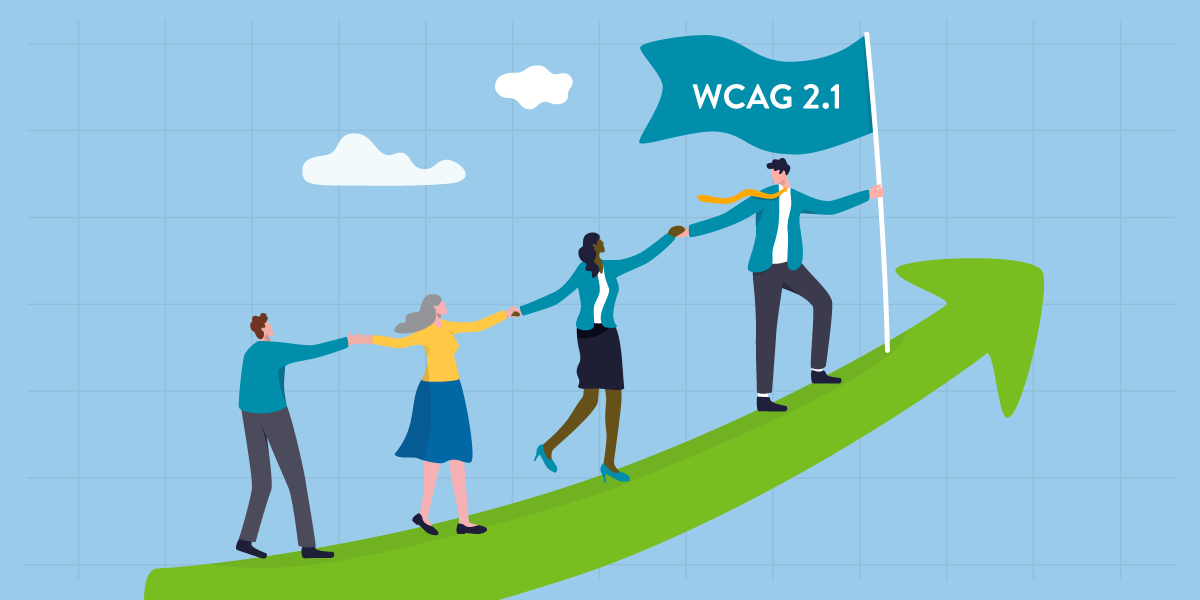Learn their WCAG 2.1 Preparation Plans
9/25/2023 1:00:44 PM

By: Jennie Delisi, Office of Accessibility
The State of Minnesota is preparing to change their digital accessibility standard. This will continue to include Section 508. The change will meet the Web Content Accessibility Guidelines (WCAG) 2.1 A and AA, instead of 2.0. To get ready for the change, a steering committee meets regularly to guide the process. Leaders from many areas of state government gather to discuss how to approach the change. They are considering:
This month we reached out to some of the committee members. We wanted to learn:
State government work involves a variety of technologies, some very specific to the needs of an agency. Key to the planning and operations of this technology is a Chief Business Technology Officer (CBTO). Involving a CBTO on the steering committee helps identify areas where the new success criteria will impact mission critical work. It also helps align with the Minnesota IT Services (MNIT) enterprise strategy.
“The MNIT teams partnering with Department of Transportation are passionate about their work as public servants. We know leaning into accessibility is an essential part of improving the customer experience,” says Interim Chief Business Technology Officer Kimberly Roberson. She says her team thinks about MNIT’s mission and vision:
“WCAG 2.1 gives us a way to assess where we are today and guides the path forward. I volunteered to be a member of the steering committee working to mobilize the State's valuable knowledge workers by role, and to support the WCAG 2.1 adoption.”
When asked about her team’s work, and considerations related to WCAG 2.1, Roberson shared some of their plan. “Notably, our partner agency leverages the marketplace and often buys Software as a Service (SaaS) and Commercial-off-the-shelf (COTS) solutions. The team plans to assess and inventory. We will track, measure, and as time goes on, improve accessibility across the application/software portfolio for the future.”
Agency leadership understand agency business needs. Technology is an important part of achieving their goals. Marcia Honold is the Planning Director for the Operations Services Division of the Minnesota Department of Natural Resources (DNR). She brings a deep understanding of how the new success criteria will impact agency work internally, but also as they connect with Minnesotans.
Honold shares, "It is a privilege to be a part of the MNIT WCAG 2.1 Steering Team and to work with such a talented group of people dedicated to accessibility. I support our shared services (internal businesses) at the DNR. Consistent communications are key. I anticipate that there will be some challenges, so maintaining flexibility and being adaptable to change will be critical to our success."
She has already identified methods for improving adoption and skills. "Training! I know that improving my accessibility skills will make the transition easier for me and my colleagues. Our accessibility coordinator, Rebecca Blomquist, strongly encourages content creators to build accessibility functionality upfront to reduce remediation efforts. She’s also working to ensure DNR’s operational orders and policies are aligned with the move to WCAG 2.1."
Advocacy work to spur and sustain change to support the needs of Minnesotans and employees with disabilities is the focus of groups like the Minnesota Council on Disability. David Dively, Executive Director, is working with several stakeholders to prepare for the update to the standard. "Digital accessibility is the next frontier of access. We are proud to advocate for WCAG standards in our state enterprise. How we communicate with digital tools is directly impacted. We will need to update the guidance we give to government and public partners as we assist and encourage others to become digitally accessible."
Dively's plan is a multi-pronged approach. "We are working with our Digital Accessibility Coordinator to ensure we are ready within our organization and spreading the word to our partners. For many, it is still about awareness. So helping folks understand the importance of accessibility and the basic principles of access make a big difference. Digital access is the new, current way that people engage with their government. We believe that is a right for everyone."
Regardless of your role in your organization, you can be an accessibility leader. Some steps to take as you prepare, based on the information shared by these steering committee members:
Accessibility is part of everyone's job. Together we can steer the State of Minnesota towards more accessible digital interactions and technologies.
Would you like to learn more about the accessibility work being done by Minnesota IT Services and the State of Minnesota? Once a month we will bring you more tips, articles, and ways to learn more about digital accessibility.
Accessibility
Accessibility